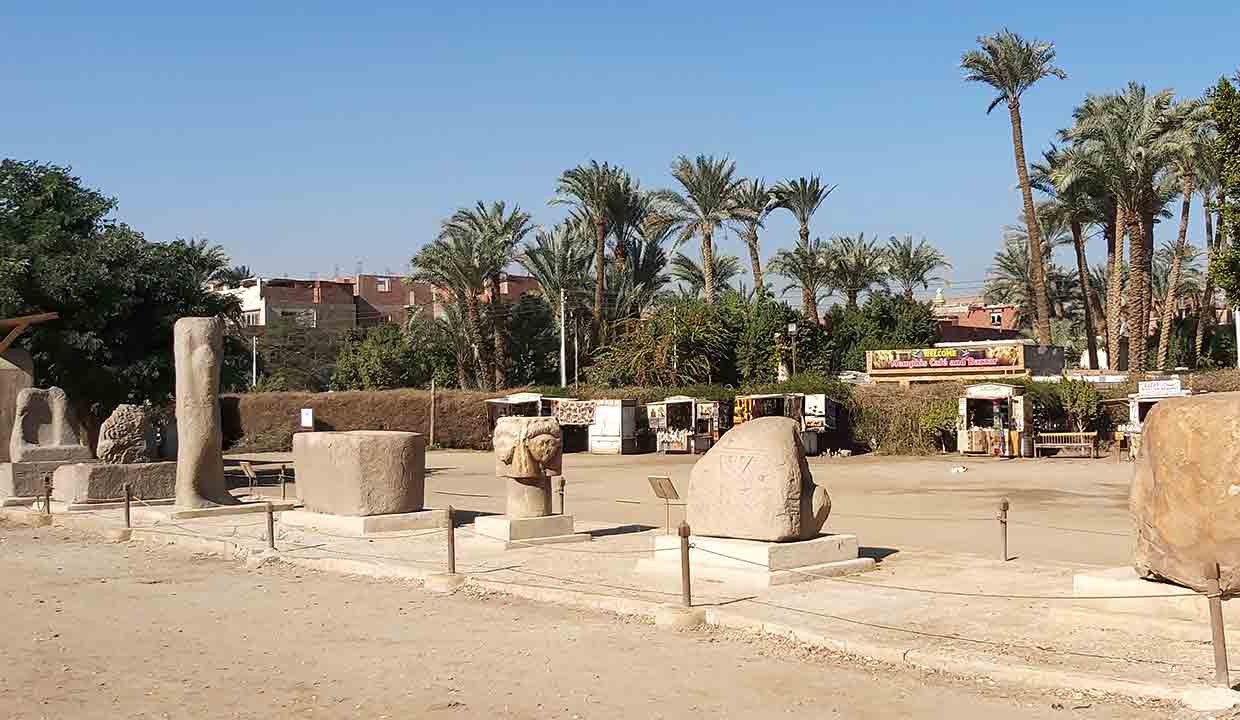Step into Memphis: An odyssey of trade, religion, and power. The heart of Egypt’s age-old tales and mysteries.
Introduction: While the bustling city of Cairo stands as a symbol of modern Egypt, just 20 km to its south lies the silent testament of ancient Egyptian grandeur: Memphis. Nestled on the Nile’s west bank, this once-thriving capital is surrounded by contemporary settlements like Mit Rahina, Dahshur, Abusir, and Abu Gorab, each bearing its own tales from antiquity.
Historical Background of Memphis: Established around 3,100 BCE by Pharaoh Menes, Memphis served as Egypt’s political and cultural heart for over a millennium. Its strategic position near the delta of the Nile ensured its prosperity and significance, making it a pivotal trade and administrative hub. As dynasties rose and fell, Memphis remained a constant, witnessing the evolution of a civilization that would shape the world.
The Modern Surroundings:
- Mit Rahina: Today’s Mit Rahina stands on what was once the heart of Memphis. The modern village is a treasure trove for archaeologists and history enthusiasts. It is home to the colossal statue of Ramesses II, the Alabaster Sphinx, and several other ruins and artifacts that hint at the grandeur of ancient Memphis.
- Dahshur: A short distance from Memphis, Dahshur is renowned for its pyramids. It’s most iconic for the Bent Pyramid and the Red Pyramid, both built during the reign of Pharaoh Sneferu. These structures represent a transitional phase in pyramid construction, bridging the gap between step-sided and smooth-sided pyramids.
- Abusir: This necropolis, slightly north of Saqqara, has served as the final resting place for many from the Old Kingdom. While less frequented by tourists, its pyramids and sun temples, particularly those dedicated to Pharaohs Sahure, Neferirkare Kakai, and Niuserre Ini, are of immense archaeological significance.
- Abu Gorab: Known primarily for its sun temple dedicated to the Pharaoh Niuserre of the Fifth Dynasty, Abu Gorab offers a unique insight into the religious practices and architectural innovations of the Old Kingdom. The emphasis on sun worship and the intricate bas-relief carvings at this site provide a rich tapestry of ancient Egyptian theology.
The Legacy of Memphis: Memphis’s significance is not just rooted in its past but also in its continuous influence on the present. The surrounding modern settlements, while bearing distinct identities, are deeply entwined with Memphis’s legacy. The ruins, artifacts, and stories embedded in the sands of these areas keep drawing scholars, tourists, and history aficionados from around the world.
The city also played a pivotal role in religious evolution, with Ptah, its patron god, considered the creator deity in the Memphite theology. This unique blend of politics, trade, and religion made Memphis a focal point of ancient Egyptian culture.
Conclusion: Memphis, with its juxtaposition against modern settlements, serves as a living museum—a bridge connecting the ancient to the present. The remnants of this once-great city, coupled with the historical richness of Mit Rahina, Dahshur, Abusir, and Abu Gorab, offer a comprehensive glimpse into the tapestry of ancient Egyptian civilization. As the shadows of the pyramids grow long in the setting sun, Memphis still whispers tales from the pages of time.
